You need a clear price for your kitchen cabinet project, but every quote you get is wildly different. This lack of a straightforward answer makes you worry about hidden costs and overpaying.
The cost to get kitchen cabinets made ranges from $150 per linear foot for basic stock options to over $1,200 for high-end custom work. The final price depends entirely on your choices in materials, design complexity, hardware, and where they are made.
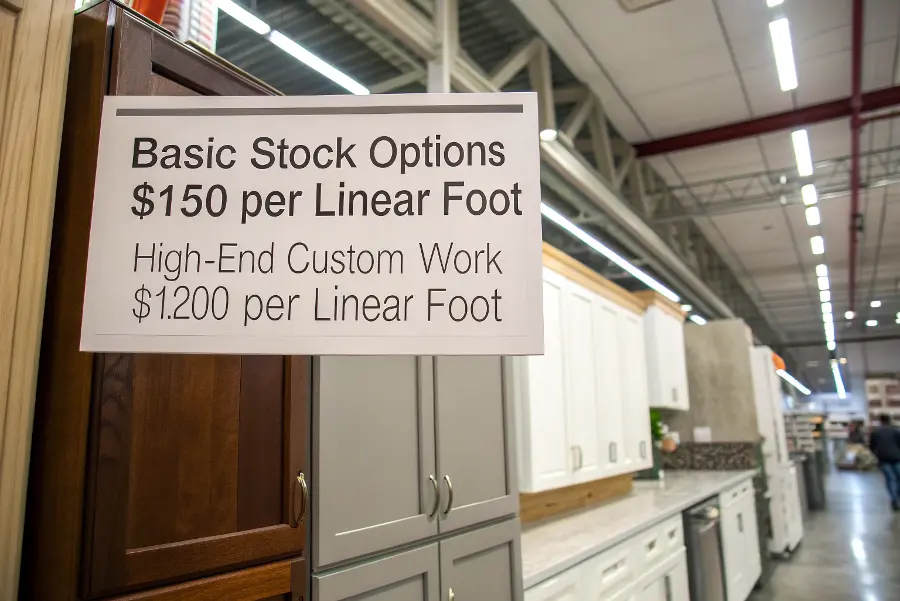
Everyone wants a simple, fixed number. But in my years of exporting furniture from Foshan, I’ve learned that for kitchen cabinets, a single price tag just doesn’t exist. The true cost is a sum of all your decisions. A buyer in the United States might pay $500 to $1,200 per linear foot for local custom cabinets. However, by sourcing smartly from China, it’s possible to save 30-50% on semi-custom or modular cabinets. The secret isn’t just looking at the unit price. It’s about understanding the full picture: Are you getting solid wood or particleboard? Brand-name soft-close hinges or generic ones? The smartest buyers demand a detailed quote, tech specs, and a physical sample from a reliable partner like Boke Furniture. This is the only way to avoid surprises and ensure you get exactly what you paid for.
How much does it cost to build kitchen cabinets?
You’re thinking about building cabinets yourself or hiring a local carpenter to save money. But you have no idea what the real material and labor costs will be, leaving you unsure if it’s a wise financial move.
Building cabinets yourself can cost $2,000-$6,000 in materials alone for a standard kitchen, plus the cost of tools. Hiring a local carpenter can range from $8,000 to $20,000+, as labor is a significant factor.
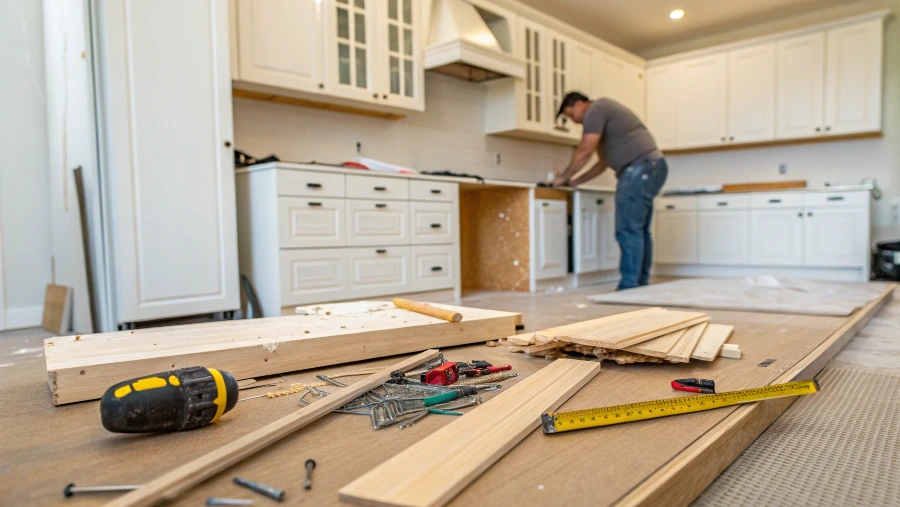
Let’s break down the term "build." It can mean two very different things: doing it yourself (DIY) or hiring a local craftsman. Both paths have very different cost structures compared to buying from a manufacturer. If you are a skilled woodworker with a full set of tools, the DIY route can seem appealing. You would mainly pay for materials. However, the cost of quality plywood, hardwood for the doors, and good hardware adds up quickly. You also need specialized tools like a table saw, router, and spray equipment for a professional finish, which is a major investment. More importantly, your time is a hidden cost. A full kitchen can take hundreds of hours to build correctly. Hiring a local carpenter shifts the cost from tools to labor. Their hourly rates are high, and they buy materials at retail prices, not the discounted bulk prices a factory gets. While great for a single unique bookshelf, a whole kitchen built this way is often much more expensive and less precise than what a specialized factory can produce.
| Cost Factor | DIY Approach | Local Carpenter |
|---|---|---|
| Materials | $2,000 – $6,000+ (Retail Price) | $3,000 – $8,000+ (Retail Price) |
| Labor | Your own time (hundreds of hours) | $5,000 – $15,000+ (Professional Rates) |
| Tools | High initial investment if you don’t own them | Included in labor cost |
| Finish Quality | Difficult to achieve professional results | Varies by skill, often not as durable as a factory finish |
Is it cheaper to buy cabinets or have them build?
You believe hiring a local craftsman to build your cabinets on-site is the classic way to get custom work done. You assume this direct approach must be cheaper than going through a large company.
It is almost always cheaper to buy cabinets from a specialized manufacturer than to have a local craftsman build them. Manufacturers leverage economies of scale, automation, and efficient processes to deliver a higher quality product for less money.
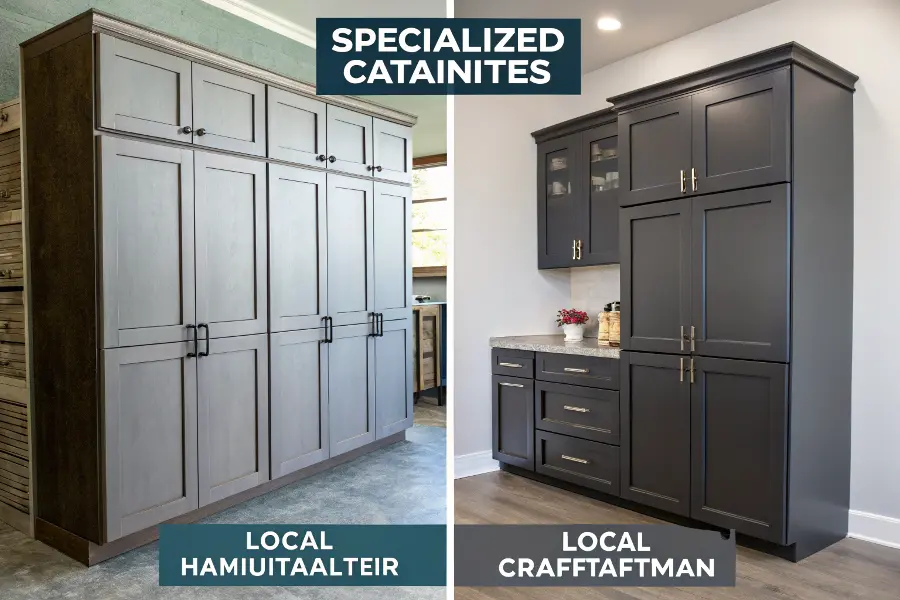
This is one of the biggest misconceptions I encounter. People imagine a large factory has high overhead, making them more expensive. In reality, the opposite is true for a project the size of a kitchen. I can tell you exactly why from my experience running Boke Furniture. We purchase materials like plywood and hardware by the shipping container, getting prices a local carpenter could only dream of. Our factory uses computer-controlled (CNC) machines that cut every part with perfect precision, minimizing waste and time. A carpenter works with hand tools, which is slower and less consistently accurate. The most significant difference is the finish. We have a dedicated, climate-controlled spray booth to apply multiple layers of durable, pre-catalyzed lacquer. This is a level of finish quality that is impossible to replicate in someone’s garage or driveway. For a single, artistic piece of furniture, a local artisan is a great choice. But for an entire set of kitchen cabinets that need to be durable and perfectly uniform, a professional manufacturer offers better value and quality every time.
How much does it cost to make kitchen cabinets?
You look at a price quote for cabinets and feel shocked. You see a set of wooden boxes and wonder why the cost is so high, feeling that the price must be inflated.
The manufacturing cost of a cabinet is a sum of its parts: raw materials (wood, panels), hardware (hinges, slides), skilled labor, factory overhead, complex finishing processes, and durable packaging. These costs add up to create the final price.
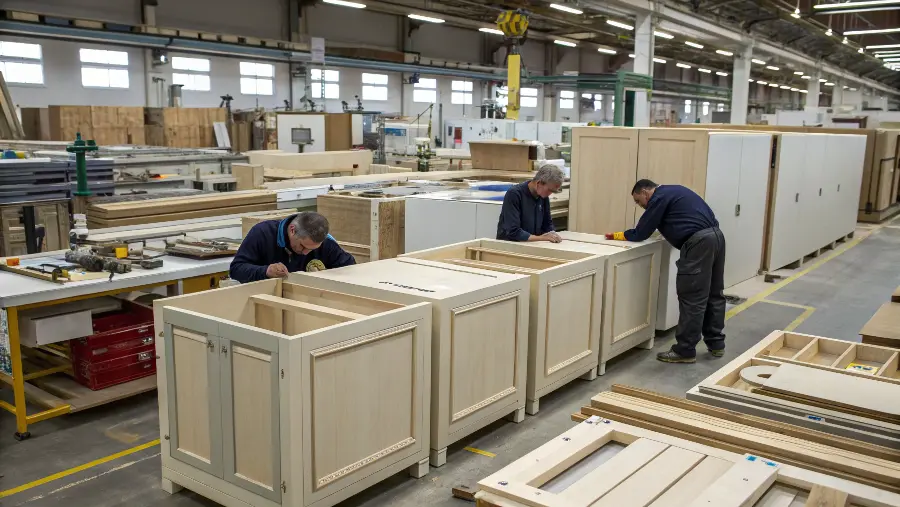
I understand the sticker shock. From the outside, a cabinet looks simple. But as a manufacturer, I see the complex process behind that simple box. The price you pay is a direct reflection of these costs. Let’s break it down.
Deconstructing the Manufacturer’s Cost
First, there are direct material costs1. This includes the cabinet box (quality plywood is much more expensive than particleboard), the door front (solid wood costs more than MDF), and the hardware. A single set of soft-close drawer slides from a top brand like Blum can cost more than the entire box of a cheap cabinet. For a whole kitchen, this adds up to a significant amount.
Second are the labor costs2. This isn’t just one person. It’s the CNC machine operator, the assembly team, the sanding crew, the finishing specialists, and the quality control inspectors. Each step requires skill and time.
Third is the finishing process. A high-quality, durable paint or lacquer finish isn’t a single coat. It’s a multi-step process of sanding, priming, painting, sanding again, and applying a top coat. This is labor-intensive and requires a special environment.
Finally, for clients like you, there’s packaging and logistics. We have to build custom crates to ensure your cabinets travel thousands of miles without a single scratch. This is a hidden but essential cost to guarantee quality upon arrival. The price isn’t for "just a box"; it’s for a piece of precision-engineered furniture.
Is it worth it to get custom kitchen cabinets?
You’re weighing the high cost of custom cabinets against the convenience of standard options. You fear spending thousands more for benefits you might not truly need or appreciate.
Yes, custom cabinets are absolutely worth it if your kitchen has an unusual layout, you have a specific design vision, or you demand the highest quality materials and construction. They solve problems that stock cabinets simply cannot.
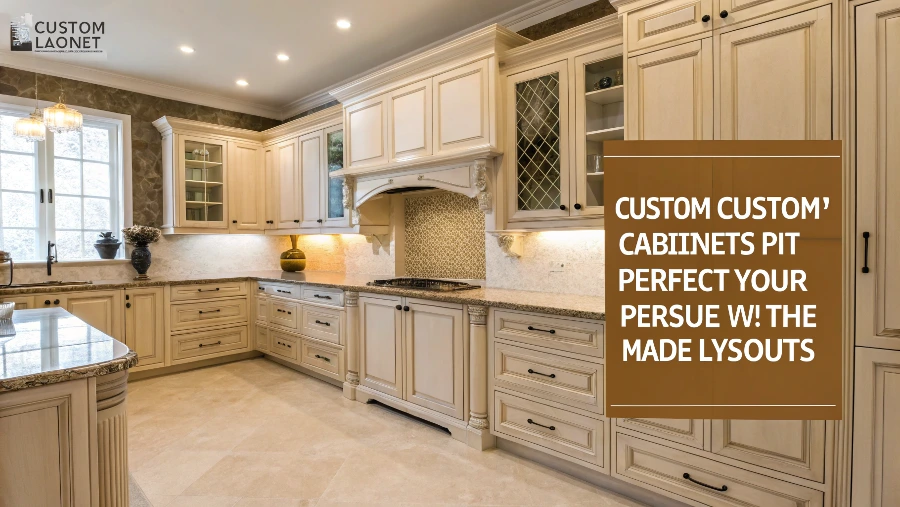
For many people, "custom" just sounds expensive. But for my clients, "custom" means "solution." The primary value of custom cabinets is their ability to perfectly fit your space. Stock cabinets come in standard 3-inch increments. But what if your wall is 124 inches long? With stock cabinets, you end up with 4 inches of wasted space covered by an ugly "filler strip." Custom cabinets are built to the exact millimeter, ensuring no wasted space and a seamless, high-end look. I worked with a project manager, Jacky from Canada, who was designing a kitchen for a historic loft with exposed pipes and uneven brick walls. No standard cabinet would work. We built each cabinet to fit around the obstacles, turning a challenging space into a unique and functional kitchen. This is the power of custom.
The True Value of Customization
Beyond the perfect fit, you get complete freedom. You choose the exact wood, the precise shade of blue, the specific door style. You can integrate custom storage solutions3, like a hidden spice rack or a pull-out pantry, right where you need them. You are also investing in superior quality4. You can specify thicker plywood, stronger dovetail drawer joints, and premium hardware that will last for decades. This isn’t just an expense; it’s a long-term investment in your property’s value and your daily enjoyment of the most important room in your home.
Conclusion
The cost of kitchen cabinets is not one price, but a result of your specific choices. Understanding the factors and working with a transparent partner is key to a successful investment.
-
Understanding direct material costs helps you grasp the true expenses involved in production, ensuring informed decisions. ↩
-
Exploring labor costs provides insight into the workforce expenses that contribute to product quality and pricing. ↩
-
Explore this link to discover how custom storage can maximize space and enhance functionality in your home. ↩
-
Learn why investing in superior quality materials can lead to long-lasting durability and satisfaction in your home. ↩
